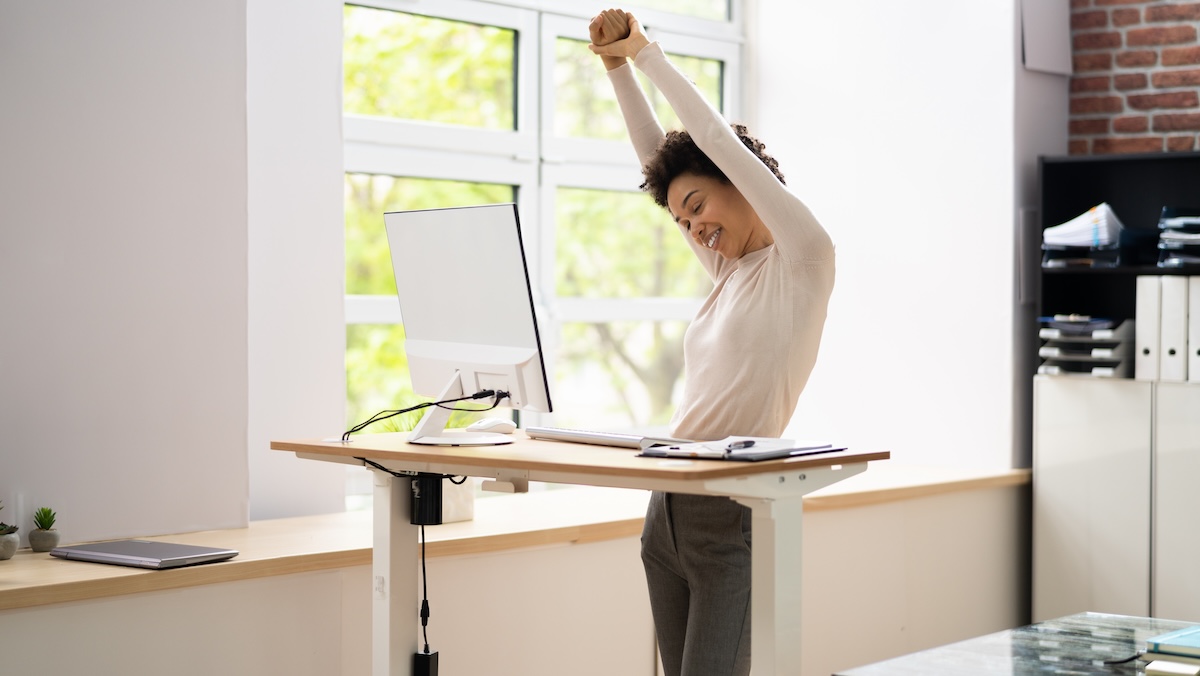
New Year’s resolutions often revolve around our health - to lose weight, exercise daily, or improve our diet. However, few people consider their musculoskeletal health even though it can cause chronic pain and reduced mobility. Spending some time thinking about your workspace and how to make it ergonomically safe is one of the best actions you can take at the start of a new year.
What is Ergonomics?
Ergonomics is the design of equipment, tools, and furniture to make it comfortable, effective, and safe to use.
Ergonomics is essential in the workplace because of the significant amount of time workers spend daily. They often sit or stand in the same position and make repetitive movements, which increases the risk of injury to their musculoskeletal system. When workplaces promote ergonomic practices, workers are more likely to increase their productivity because it makes the job easier and more comfortable. There are fewer repetitive motions with less exertion, and workers’ posture is optimised. Working in a well-designed space that considers their needs can also improve staff morale and motivation.
Assessing Your Workspace
An ergonomic assessment looks at a worker’s posture, environment, seating/standing arrangement, and equipment. Below is a step-by-step guide for evaluating your workspace's current ergonomic state and identifying areas of improvement.
Check the Chair
Adjust the height of your ergonomic chair so that your feet are on the floor and your thighs are horizontal. If needed, use a footstool so your feet can remain flat. Check the distance between the front of the seat pan and the back of your knees. There should be a 2cm clearance. Next, set the seat pan so it tilts horizontally or slightly forward, and your hips are between 90 and 120 degrees.
Delve Into the Desk Design
If you have a height-adjustable desk, you have the flexibility to set the seated height so there is enough clearance between your knees and the underside of the desk. When standing, set the height of the table to just below the elbow and save the setting, if possible.
Fixed-height desks mean there isn’t much you can do to make it the right height, so you will need to rely on adjusting the height of your chair. However, the equipment placed on your desk can have a bearing on workstation ergonomics. If you use a telephone regularly, move it into a position that is easy to reach. Heavy files should also be kept in an easy-to-reach position and not stored above your head to reduce the risk of neck and shoulder injury.
Measure the Mouse and Keyboard
Reaching for the mouse is a common problem as users often end up chasing it all over the desk without realising they’re stretching for it. If you have experienced any hand or wrist issues in the past and you use the mouse throughout the day, consider upgrading your standard mouse to an ergonomic mouse. Having your hand in a natural, neutral position can help avoid carpal tunnel and other wrist/hand problems.
Screen Safety
Position the chair so your fingertips touch the screen. This will ensure you can comfortably see the screen without squinting and is not too close, which can cause eye burning, dryness, and strain.
To avoid shoulder and neck pain, adjust the monitor's height so the top of the screen is at eye level. This will avoid the need to look up or down at the screen.
Implementing Movement
Workers can’t rely solely on ergonomic equipment for a healthy ergonomic environment. Every worker is responsible for keeping themselves safe by moving their body regularly. Sitting for long periods can cause blood to pool in the legs, leading to varicose veins, spider veins, tight hips, and back strain.
Remind yourself to get up and move around the office for 5-10 minutes at least every hour. Walking around gets the circulation moving and changes your position. Even if you don’t have time to walk around every hour, stand and stretch - this improves flexibility and muscle soreness. It also helps with muscle tension and can reduce muscle pain for good health. Read our articles on lower back stretches and neck and shoulder stretches. Move and micro-break part of your daily work routine to look after your musculoskeletal health.
Maintaining an Ergonomic Mindset
When being busy at work, it’s easy to work through and forget or avoid taking micro-breaks or letting your posture lapse. But ergonomics is too important, so make it part of your work routine. First up in the morning, check your desk and chair setup. Sit or stand with good posture, and remember to check your posture throughout the day, as it’s easy to let it lapse and start to slouch. If you struggle to remember to take short breaks, use an app or set a calendar reminder to get up from your desk. Remind yourself to complete your good habits daily. Try not to break the chain and see how your good ergonomic mindset becomes a habit.
Make the new year a new you by ensuring ergonomics is a priority in 2024, and enjoy the benefits of your new mindset. If you would like advice on ergonomic equipment to suit your needs, call one of our experts at (08) 9240 7066 or contact us online.